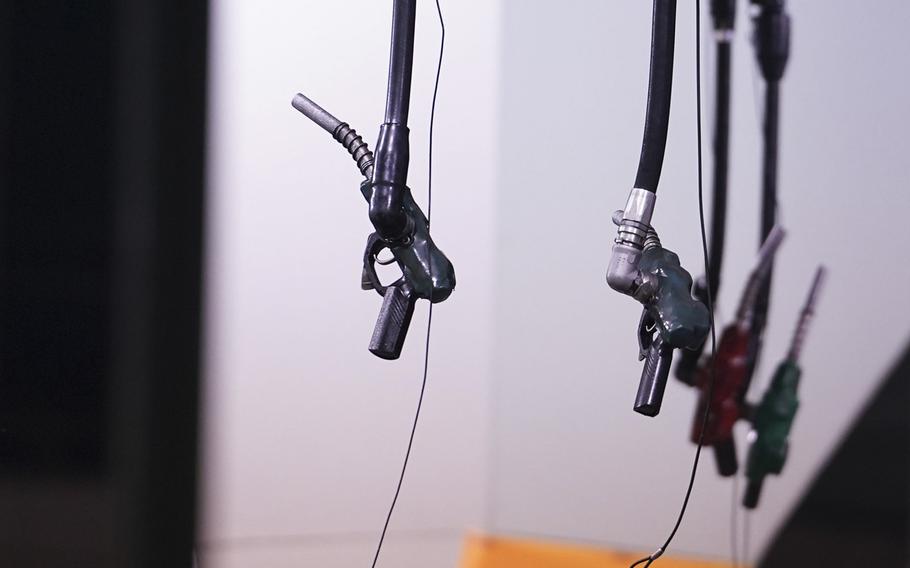
A gas station in Tokyo. (Toru Hanai/Bloomberg )
The global oil market keeps sending up flares on the outlook for weaker demand. In the latest, a closely watched gauge of Asian crude consumption tumbled to a seven-month low as surging virus cases in China trigger lockdown-like restrictions in the country, the world's biggest importer.
The premium of Oman futures over Dubai swaps fell below $1 a barrel on the Dubai Mercantile Exchange on Thursday. It's plunged about 80% this month.
Oil markets have weakened in November, with a host of widely watched metrics flashing warning signs and dragging futures prices lower. Among them, the prompt spreads for Brent crude and leading U.S. grade West Texas Intermediate have dipped into contango, a bearish pricing pattern that indicates ample near-term supply. As the red flags proliferate, Brent futures declined this week to their cheapest price since January.
Expectations for a recovery in Chinese oil demand are fading as daily coronavirus have hit record levels, spurring officials to step up containment measures and movement curbs. Amid the challenging backdrop, some Chinese refiners are refraining from buying cargoes of a favored Russian grade, cutting demand just as traders wait for more details on a Group of Seven plan to cap Russian oil alongside European Union sanctions that start on Dec. 5.
"The fact that Dec. 5 is not injecting any premium suggests the market is sanguine there will be no major supply disruption, at least nothing on a sustained basis," said Vandana Hari, founder of Vanda Insights in Singapore.
Brent futures headed for a third weekly drop on Friday amid further signs from China that anti-virus restrictions in key cities are multiplying as officials seek to quell coronavirus outbreaks. In Beijing, the capital that's home to 22 million people, there's been a fresh round of curbs, with residents asked not to leave.
The Oman futures-Dubai swaps gauge, which slipped below $1 for one day in April, has mostly commanded multiple-dollar premiums since the invasion of Ukraine. It spiked as high as $15 in March as many buyers started shunning Russian oil, raising the appeal of Mideast crude and boosting the premium.
With physical trading this month mostly concluded for January-loading cargoes, spot premiums for key Persian Gulf grades have declined sharply. While China's Rongsheng Petrochemical Co. did purchase about 7 million barrels mid-month, that wasn't enough to lift the sentiment, traders of those grades said.
Meanwhile, another physical market indicator - inter-month Dubai swaps - was in a contango early Friday, signaling bearishness for December through April, before flipping back to a slightly backwardated structure, PVM Oil Associates data showed. Before this week, the last time it was in contango was in April 2021.
Brent traded at near $87 a barrel on Friday after hitting $82.31 on Monday, the lowest intraday price since January.